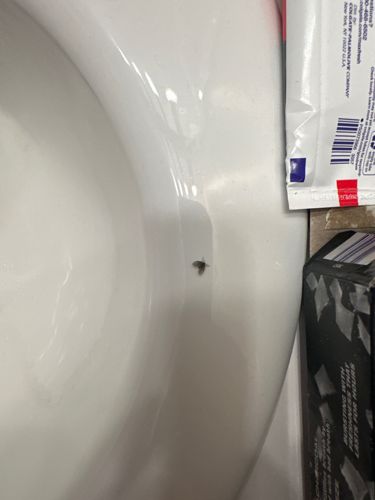Drain Fly (also known as Moth Fly, Filter Fly, or Sewer Fly)
Scientific Name: Psychodidae (a family of flies)
Order & Family: Order: Diptera, Family: Psychodidae
Size: 1.5 mm - 5 mm (Adults typically measure around 1/8 inch or 2-3 mm)

Natural Habitat
Found in moist, organic-rich environments, particularly in drains, sewers, septic tanks, and areas with standing water and decaying matter. Indoors, they are common in bathrooms (sinks, showers, toilets) and kitchens.
Diet & Feeding
Larvae feed on decomposing organic matter, bacteria, fungi, and algae found in neglected drains and sewage. Adult drain flies do not typically feed, but may take occasional sips of water or nectar.
Behavior Patterns
Adults are weak, erratic flyers, often seen crawling on surfaces near their breeding sites. They are typically most active in the evening and night. Larvae develop in the gelatinous film that builds up in drains. The life cycle from egg to adult can be as short as 1-3 weeks depending on conditions.
Risks & Benefits
Potential risks include being a nuisance, especially in large numbers. While they don't bite or transmit diseases in the way mosquitoes or house flies do, they can mechanically transfer bacteria and other pathogens from their breeding sites (sewage, decaying matter) to surfaces in homes, potentially contaminating food. They are generally not considered beneficial to humans.
Identified on: 9/18/2025